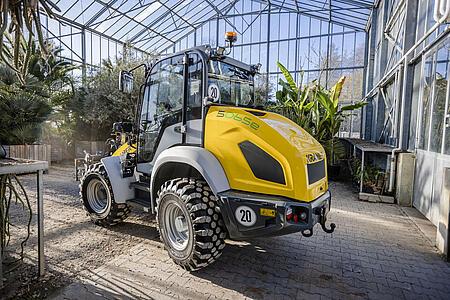
The Kramer electric wheel loader
Innovation and sustainability are Kramer's key values and the main driving factors for the continual design and development of new machines. For many years, we have been searching for alternative forms of energy and drive technologies to achieve our goal of developing machines which are sustainable and environmentally friendly yet simultaneously powerful machines.
The topic of electromobility has also been playing a major role within the construction industry for a number of years. Electric construction machines are no longer a rare occurrence on building sites, but many of them are powered by cables. The challenge we set ourselves here at Kramer was first and foremost to develop resource-efficient, mobile and compact construction machinery.
The objective was and still is to include the same performance range in electrically operated vehicles as achieved by our diesel vehicles. These development efforts are absolutely fulfilled in our first fully electric 5055e wheel loader.
Absolutely no exhaust fumes
- Work can be carried out efficiently indoors
- Working in tunnels without expensive ventilation systems is now possible
- No impact on air quality for urban applications thanks to an entirely emissions-free mode of operation
- No emissions whatsoever when working in zoos, botanical gardens and parks
Low noise pollution
- Ideal for noise-sensitive areas such as city centers, cemetery maintenance, hotel facilities, parks and local recreation areas.
- Perfectly suitable for winter service (e.g. snow clearance, hotel trade and municipal use)
- Less noise disturbance for (new) residential areas



